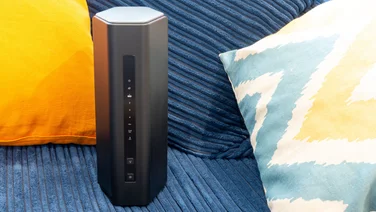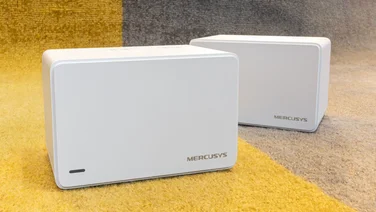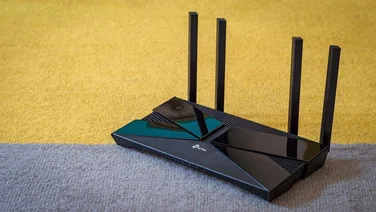To help us provide you with free impartial advice, we may earn a commission if you buy through links on our site. Learn more

Asustor’s AS304T is a 4-bay NAS with a powerful dual-core Intel Atom processor and an HDMI output, so you can connect it directly to your TV and use it as a media player. It ships as a barebones, so you’ll need to provide your own disks, but setting up the NAS is simple.
The disk caddies are securely mounted in place but can be removed by pressing a button, which in turn releases a handle that you pull to dismount the caddies. There are screws supplied, and you’ll need these in order to secure your 3.5in or 2.5in hard disks into the caddies. This part of the set up process is quick, but it’s the next part that ate up a lot of time.

We inserted four WD Red NAS hard disks into our AS304T, and when given the choice of RAID setups, we chose RAID 5 for its performance and slightly better capacity when compared to RAID 6. The process of building a RAID 5 array on the AS304T took well over 24 hours, and while you can use the NAS while this process is being undertaken, you’d be best advised to leave it until it’s finished.
We also recommend that you use properly cleaned hard disks; we initially used disks that had previously been in another NAS, and the way in which the disks partitions were formatted caused our AS304T to crash eight hours into the RAID building process.
Once set up, you’ll be presented with Asustor’s user-friendly web-based ADM interface. Unlike some cheaper NAS devices, this interface is a desktop-style affair, with icons, windows and apps for you to use and arrange to your liking. It’s not as pretty as Synology’s DSM5 software, but we found it equally easy to use when it was behaving nicely. However, it would sometimes misbehave and became fairly extremely frustrating to use.
Rather too often than we’d have liked, the user interface simply hung for up to twenty seconds at a time meaning our clicks and commands were significantly delayed. This happened more often when the NAS was in Media Mode, where some of its processing power is directed towards running media applications.
Simple file shares are easy to create and configure, and you can also set up access rights for individual users and groups. You can also set up file services for Windows (CIFS/SAMBA), Mac OS X (AFP) and Linux (NFS) to ensure all your devices can properly access all the files on your NAS. FTP and WebDAV support is also available so your files can be accessed from specialised clients or from a web browser.
A more enterprise-level feature that some home users may find useful is an ISO mounting tool. This lets you mount a CD or DVD image, such as for a software install, and access it from any computer on your network as if it were a regular folder.
One of the key ways NAS makers can set themselves apart from the competition is with a populated and vibrant app ecosystem, something which many lack. Asustor’s App Central is one of the better NAS software stores, with a big variety of first- and third-party tools readily available to download. This gives you the ability to greatly extend the use of your NAS for no cost whatsoever.
Whether you’re looking for an app to run a media centre, to host a website or to access your Cloud storage provider, in all likelihood you’ll find it in App Central. One thing we aren’t so keen on is the amount of time it takes to download an app; trying to install the XBMC media centre application took half an hour on our high-speed connection, a pattern repeated with all over installations we’ve attempted on both the AS304T and the AS202TE.

We put the dual-core processor through its paces using the installed XBMC media centre application, playing an HD video via the HDMI port. The video played free of stutter, and we were also able to navigate XMBC’s various menus without delay. We also installed the Google Chrome web browser and surfed the web using a USB mouse and keyboard. Visiting image-heavy web pages did result in jerky performance, but web browsing is unlikely to be the primary use of the NAS.
Data transfer performance is very good, as you’d expect from a NAS of this price. Performance in both RAID 5 and 6 were more or less equal. We saw large file read and write speeds of around 82MB/s, while small file write speeds were completed at around 13.5MB/s. Small file read speeds, meanwhile, were around 18.5MB/s.
The Asustor AS304T is an excellent 4-bay NAS that has speedy performance as well as the ability to smoothly play back videos over HDMI. It also does all the things you’d expect of a NAS such as backup, sharing and also has mobile applications allowing you to access data while on the move. If you’re not planning on taking advantage of its raw performance, your money may be better spent on the cheaper – albeit more basic – Netgear RN10400.






